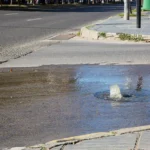A swimming pool adds beauty, comfort, and luxury to any home, but over time, it may develop issues that compromise both its functionality and appeal. Structural cracks, water leaks, and outdated materials can affect not only the pool’s performance but also its safety and efficiency. These problems often result from age, ground movement, or improper installation. A pool remodel can restore and even improve your pool’s integrity while enhancing its overall look and operation. We will explore how a comprehensive remodeling process can correct structural and leakage issues, ensuring your pool remains a lasting source of relaxation and enjoyment for years to come.
Discover insights that others missed—dive into our related post now!
How Pool Remodeling Resolves Structural and Leakage Problems
1. Addressing Foundation Cracks and Structural Weaknesses
Over time, pools can develop cracks in the foundation due to shifting soil, water pressure, or natural wear. These cracks not only lead to water loss but also compromise the entire structure’s stability. A pool remodel provides an opportunity to repair these issues from the ground up. During remodeling, professionals typically drain the pool, inspect it for visible and hidden cracks, and use advanced materials, such as hydraulic cement or epoxy injections, to fill and seal the affected areas.
If the damage is more severe, parts of the concrete shell may need to be replaced or reinforced using modern construction methods. Nassau Pools and Spas ensures that the foundation becomes stronger than before, reducing the likelihood of future cracks. In some cases, remodelers may also add structural supports or apply a waterproofing membrane to prevent leaks from reoccurring. This detailed restoration process not only fixes existing issues but also helps extend the pool’s overall lifespan.
2. Repairing Leaks Caused by Aging Materials and Plumbing Issues
Leaks can develop from more than just cracks in the pool’s surface. Aging plumbing systems, loose fittings, and worn-out tiles or grout can all contribute to water loss over time. During a remodel, technicians often conduct a comprehensive leak detection process to accurately pinpoint the source. Once identified, damaged plumbing lines are either repaired or replaced with more durable, corrosion-resistant materials. This might involve replacing old PVC pipes, resealing joints, or even upgrading the filtration system to enhance efficiency.
Additionally, resurfacing the pool with modern materials, such as quartz, pebble, or fiberglass finishes, helps create a smoother, more resilient surface that prevents future leaks. The renovation process not only restores the pool’s watertight condition but also enhances water circulation, reducing pressure on pipes and equipment. By addressing both the plumbing and surface issues simultaneously, a pool remodel provides a long-term solution rather than a temporary fix.
3. Reinforcing Pool Decks and Surrounding Structures
Structural or leakage problems don’t always originate inside the pool itself; sometimes, they begin with the surrounding environment. A cracked or uneven pool deck can cause water to seep into the ground, eventually affecting the pool’s foundation. A remodel can correct these issues by repairing or replacing damaged decking materials, improving drainage, and ensuring proper water flow away from the pool. During this process, contractors often inspect the deck’s grading, install expansion joints, and apply sealing compounds to prevent water intrusion.
Upgrading the deck with new materials, such as travertine, concrete pavers, or textured finishes, not only improves durability but also enhances safety by reducing slip risks. This type of renovation ensures that both the pool and its surrounding structures work together seamlessly, minimizing the potential for future structural or leakage complications. Reinforcing the surrounding area also adds aesthetic value, making the pool area look modern and well-maintained.
4. Updating the Waterproofing and Lining Systems
Even a well-built pool can experience water leakage if its waterproofing layer wears down over time. Many older pools rely on plaster or outdated liners that degrade over time, leading to seepage. A remodel provides homeowners with the opportunity to replace outdated materials with newer, more durable options. For instance, applying a modern waterproofing membrane beneath the pool surface or installing a new vinyl or fiberglass liner can dramatically enhance water retention. These new materials are designed to resist chemical damage, UV exposure, and temperature changes that typically cause leaks.
In addition to sealing the pool more effectively, upgrading the waterproofing system also enhances overall aesthetics, giving the surface a smooth and uniform appearance. This upgrade not only prevents future leaks but also contributes to a cleaner, easier-to-maintain pool, reducing the need for frequent patchwork repairs. With advanced waterproofing materials now available, homeowners can enjoy both functionality and beauty for years without worrying about water loss.
5. Improving Drainage and Filtration Systems for Leak Prevention
Proper drainage and filtration play critical roles in preventing structural or leakage problems. Poorly designed drainage systems can cause water to accumulate around the pool’s base, leading to hydrostatic pressure that damages the walls or floor. As part of a remodel, professionals can install modern drainage solutions such as improved sump systems, perimeter drains, or hydrostatic relief valves to manage water flow more effectively. Similarly, updating the filtration and circulation systems helps reduce strain on pipes and fittings, preventing hidden leaks.
A pool remodel is more than just an aesthetic upgrade—it’s an essential investment in the longevity and safety of your pool. Structural cracks, leaks, and outdated materials can cause significant damage if left unaddressed, but a thorough renovation can restore the pool’s strength and efficiency. From repairing the foundation and plumbing to improving waterproofing, drainage, and deck structures, each remodeling step contributes to a stronger, leak-free pool. Through careful inspection and modern repair techniques, a pool remodel ensures that your investment remains both functional and visually appealing for years to come.
Don’t miss out! Check our featured post for trending ideas and expert tips.






